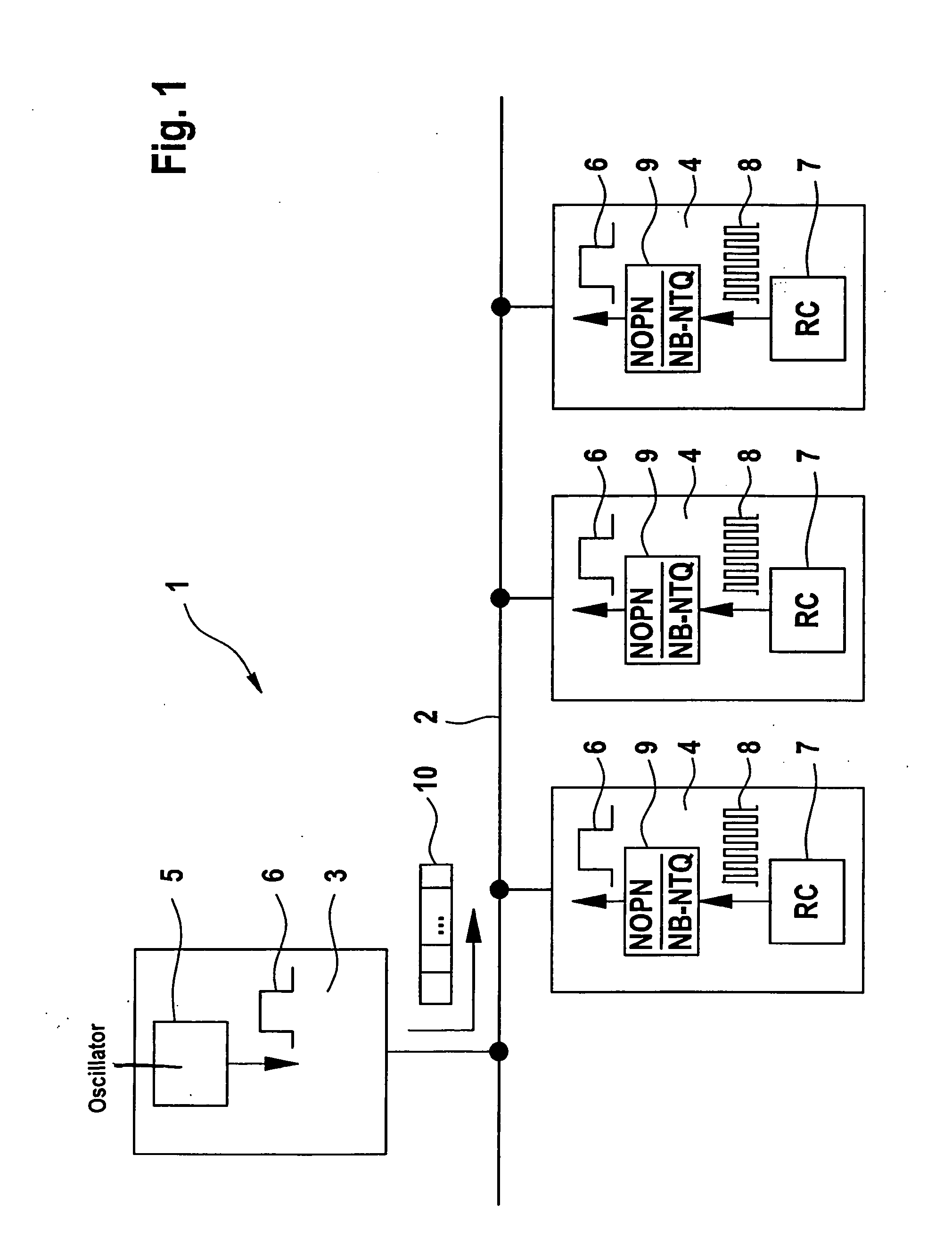Communication system including a data bus and multiple user nodes connected thereto, and method for operating such a communication system
a communication system and data bus technology, applied in the field of communication system having a data bus, can solve the problems of inability to transmit actual payload data, special calibration messages must be provided, and less bandwidth available for transmitting actual payload data, so as to achieve greater accuracy, limited error detection and error handling functionality, and greater accuracy
- Summary
- Abstract
- Description
- Claims
- Application Information
AI Technical Summary
Benefits of technology
Problems solved by technology
Method used
Image
Examples
Embodiment Construction
[0033]A communication system according to the exemplary embodiments and / or exemplary methods of the present invention is denoted overall by reference numeral 1 in FIG. 1. The communication system includes a data bus 2 to which multiple user nodes 3, 4 are connected. User node 3 has a clock generator designed as a quartz crystal or quartz oscillator 5. This clock generator emits a clock signal 6 which corresponds to a system clock signal of data bus 2. Remaining user nodes 4 have a clock generator which is designed as an RC oscillator 7. The RC oscillator sends an oscillator clock signal 8 which is different from system clock signal 6. For this reason, oscillator clock signal 8 must first be converted to system clock signal 6, using a clock divider 9. The divider ratio of clock divider 9 is set within the scope of a calibration of user nodes 4; users 4 are synchronized to system clock signal 6 of data bus 2.
[0034]The communication system illustrated in FIG. 1 has the advantage over c...
PUM
 Login to View More
Login to View More Abstract
Description
Claims
Application Information
 Login to View More
Login to View More - R&D
- Intellectual Property
- Life Sciences
- Materials
- Tech Scout
- Unparalleled Data Quality
- Higher Quality Content
- 60% Fewer Hallucinations
Browse by: Latest US Patents, China's latest patents, Technical Efficacy Thesaurus, Application Domain, Technology Topic, Popular Technical Reports.
© 2025 PatSnap. All rights reserved.Legal|Privacy policy|Modern Slavery Act Transparency Statement|Sitemap|About US| Contact US: help@patsnap.com



